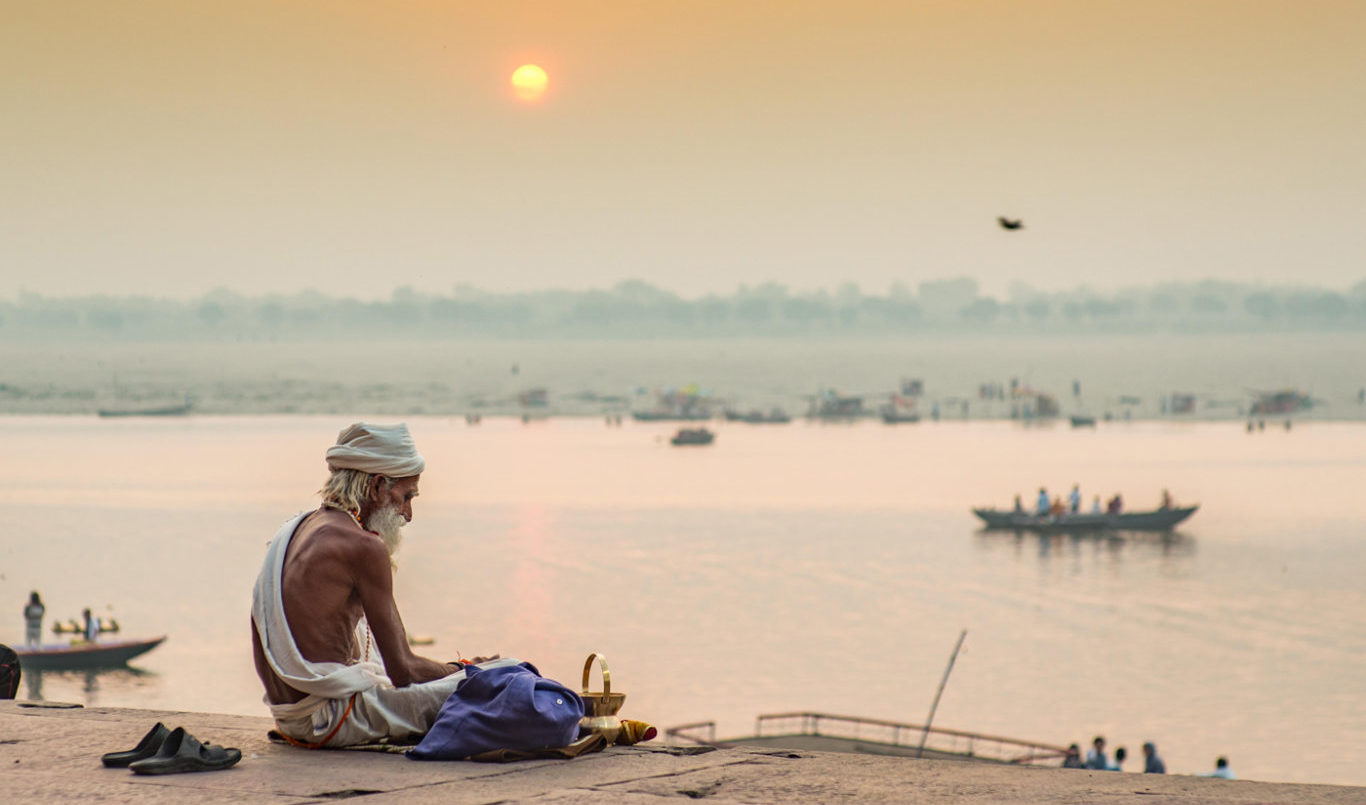What was the Buddha’s world like during his teaching years?

A modern-day Hindu renunciate sits by the banks of the Ganges river in the ancient city of Varanasi, India, just as renunciates did in the Buddha’s time. | Filip Jedraszak / Alamy Stock Photo
The Buddha is thought to have been born in the 5th century BCE in what is now Lumbini, Nepal, and raised nearby in the city of Kapilavastu. The precise site of this ancient city is unknown, but it was situated south of the Himalaya mountains, not far from what is now the border of India.
Tradition says the Buddha lived most of his adult life in the ancient kingdoms of northeastern India, in the modern-day states of Bihar and Uttar Pradesh. The Ganges River and its many tributaries flow through this region, and in the mid-first millennium BCE it was a land of lush forests and wetlands.
For centuries the people of the Gangetic plain were nomads, but by the Buddha’s lifetime, the nomadic culture had given way to permanent settlements, agriculture, and commerce. Society was organized around familial clans, and the precursor of today’s caste system was already in place. The Buddha-to-be was born into a clan called the Shakya or Sakya―in Sanskrit, “those who are capable.” One of the names he would later be known by was Shakyamuni, or “sage of the Shakyas.”
Buddhist scholars such as Trevor Ling point out that the Buddha-to-be was born in an area where the caste system was known, but did not necessarily predominate. This gave him the insight that the caste system of the brahmins–the highest, priestly caste–was not the only way for society to be organized.
Traditional narratives describe the future Buddha as the son of a king. Scholars say the clans were actually headed by chieftains who were chosen by consensus rather than by birth, but by the middle of the 1st millennium BCE kingdoms were forming, sometimes violently, on the Gangetic plain. Within a few generations, the clans dissolved and were absorbed into kingdoms.
The Gangetic plain in the mid-1st millennium was also a place of spiritual upheaval. Religion had been guided by ancient Sanskrit verses and hymns called the Vedas for many centuries. The oldest collection of these, the Rig Veda, dates to approximately the 15th – 9th century BCE. When the Buddha was born new texts called the Upanishads were gaining prominence. They were full of ideas that challenged old ways of thinking. Mendicant “holy men” called shramanas―renunciates―wandered the plain seeking an end to rebirth and the suffering attendant upon it. The Buddha joined their ranks when he left home to seek the end of suffering.
This time and place of change and upheaval proved to be a fertile time for religion and philosophy. Many new sects emerged in this period in addition to Buddhism, including Jainism. It was a fortunate time for a great teacher to be born.

Tricycle is more than a magazine
Gain access to the best in sprititual film, our growing collection of e-books, and monthly talks, plus our 25-year archive
Subscribe now